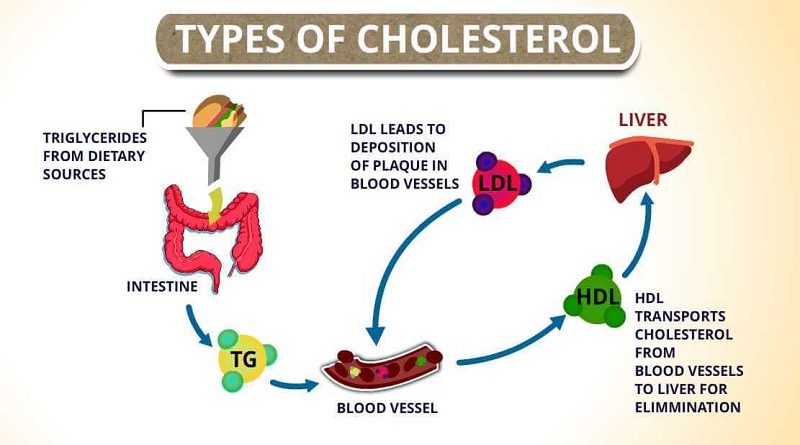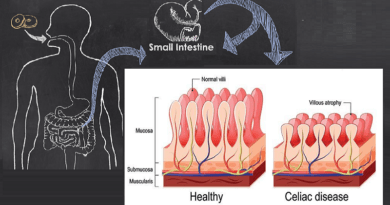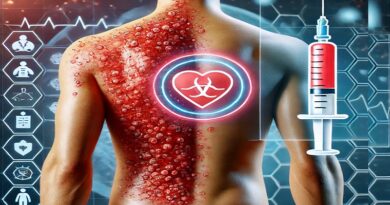Getting a Lipid Profile Test: Learn About Your Cholesterol, HDL, LDL, and Triglyceride Levels. Knowledge is Power!
High cholesterol levels are a major risk factor for heart disease, which is the leading cause of death globally. While high cholesterol levels often do not present any noticeable symptoms, it is important to get a lipid profile test to identify any potential risks early on. A lipid profile test measures cholesterol levels, including HDL (high-density lipoprotein), LDL (low-density lipoprotein), and triglycerides. In this article, we will discuss why it is important to get a lipid profile test and what the results mean.
Why get a lipid profile test?
A lipid profile test can help identify potential risks for heart disease and other health problems. The American Heart Association recommends getting a lipid profile test every four to six years for individuals over the age of 20, or more frequently if there are risk factors present such as a family history of heart disease, high blood pressure, or smoking. A lipid profile test can also help monitor cholesterol levels if an individual is already on medication or making lifestyle changes to manage high cholesterol levels.
What to expect during a lipid profile test?
A lipid profile test is a blood test that can be done at a doctor’s office or a laboratory. The test typically requires fasting for 9-12 hours beforehand, which means not eating or drinking anything other than water during that time. During the test, a healthcare professional will draw blood from a vein in the arm using a needle. The blood sample will then be sent to a lab for analysis.
Interpreting the results of a lipid profile test
A lipid profile test measures several components of cholesterol levels, including total cholesterol, HDL cholesterol, LDL cholesterol, and triglycerides. Here is what the results of each component mean:
- Total Cholesterol: Total cholesterol is the sum of all cholesterol in the blood, including HDL and LDL cholesterol. A normal range for total cholesterol is less than 200 mg/dL.
- HDL Cholesterol: HDL cholesterol is known as “good” cholesterol as it helps remove excess cholesterol from the bloodstream. A normal range for HDL cholesterol is 40 mg/dL or higher for men and 50 mg/dL or higher for women.
- LDL Cholesterol: LDL cholesterol is known as “bad” cholesterol as it can build up in the arteries and increase the risk of heart disease. A normal range for LDL cholesterol is less than 100 mg/dL.
- Triglycerides: Triglycerides are a type of fat that can increase the risk of heart disease when levels are too high. A normal range for triglycerides is less than 150 mg/dL.
What do abnormal results mean?
Abnormal lipid profile test results can indicate potential risks for heart disease and other health problems. Here is what the abnormal results mean for each component:
- Total Cholesterol:
High total cholesterol levels can increase the risk of heart disease. If total cholesterol levels are high, it is important to also look at the levels of HDL and LDL cholesterol to identify any potential risks. - HDL Cholesterol:
Low HDL cholesterol levels can increase the risk of heart disease. If HDL cholesterol levels are low, making lifestyle changes like increasing exercise and changing diet can help improve levels. - LDL Cholesterol:
High LDL cholesterol levels can increase the risk of heart disease. If LDL cholesterol levels are high, making lifestyle changes and taking medication prescribed by a healthcare professional can help manage levels. - Triglycerides:
High triglyceride levels can increase the risk of heart disease. If triglyceride levels are high, making lifestyle changes like reducing alcohol consumption and changing diet can help improve levels.
What are the risk factors for high cholesterol?
While high cholesterol can affect anyone, there are certain risk factors that can increase the likelihood of developing it. These risk factors include:
- Poor diet:
A diet that is high in saturated and trans fats can lead to high cholesterol levels. - Lack of exercise:
Regular physical activity can help lower cholesterol levels. - Over-weight:
Excess weight can contribute to high cholesterol levels. - Genetics:
High cholesterol can be inherited from your parents or other family members. - Age and gender:
Cholesterol levels tend to rise as you get older, and men are more likely to have high cholesterol than women. - Medical conditions: Certain medical conditions, such as diabetes, hypothyroidism, and liver or kidney disease, can contribute to high cholesterol levels.
How is a lipid profile test done?
A lipid profile test is a simple blood test that can be done at a doctor’s office or a lab. The test requires fasting for 9 to 12 hours prior to the test. During the test, a healthcare professional will draw blood from a vein in your arm. The blood sample will then be sent to a lab for analysis. Results are usually available within a few days.
What do the results of a lipid profile test mean?
The results of a lipid profile test can provide valuable information about your cholesterol, HDL, LDL, and triglyceride levels. Here’s what the results may indicate:
- Total cholesterol:
Ideally, your total cholesterol should be less than 200 mg/dL. If your total cholesterol is between 200 and 239 mg/dL, you may be at increased risk for heart disease. If your total cholesterol is 240 mg/dL or higher, you may have high cholesterol. - HDL cholesterol:
Ideally, your HDL cholesterol should be 60 mg/dL or higher. HDL cholesterol is considered “good” cholesterol because it helps remove LDL cholesterol from your arteries. - LDL cholesterol:
Ideally, your LDL cholesterol should be less than 100 mg/dL. If your LDL cholesterol is between 130 and 159 mg/dL, you may be at increased risk for heart disease. If your LDL cholesterol is 160 mg/dL or higher, you may have high cholesterol. - Triglycerides:
Ideally, your triglycerides should be less than 150 mg/dL. If your triglycerides are between 150 and 199 mg/dL, you may be at increased risk for heart disease. If your triglycerides are 200 mg/dL or higher, you may have high triglycerides.
What can you do to improve your lipid profile?
If your lipid profile test indicates that you have high cholesterol or triglycerides, there are steps you can take to improve your lipid profile and reduce your risk for heart disease. Here are some tips:
- Eat a healthy diet: Focus on a diet that is low in saturated and trans fats and high in fruits, vegetables, whole grains, and lean protein sources.
- Exercise regularly: Aim for at least 30 minutes of moderate-intensity exercise, such as brisk walking, on most days of the week.
- Lose weight if you need to: Losing just 5% to 10% of your body weight can help improve your lipid profile.
- Quit smoking: Smoking can contribute to high cholesterol levels and increase your risk for heart disease.
- Take medication if necessary: In some cases, lifestyle changes may not be enough to lower cholesterol or triglycerides. Your healthcare provider may recommend medication to help lower your levels
SUMMARY
Getting a lipid profile test is important for knowing your cholesterol levels and preventing heart disease. Learning about HDL, LDL, and triglycerides, can help you to take control of your heart health. Test your lipids today to keep an eye on your lipids levels and take an action to keep them within normal levels.




